

Although cycling is generally a safe activity, you should still take precautions before going out on your bike. And that goes beyond simply wearing a helmet. Here’s a breakdown of the essential bike safety gear you need for your next ride.
Helmet
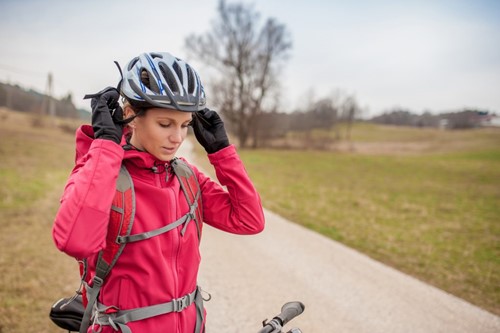
Let’s get the most obvious and essential piece of safety gear ticked off first.
The reason you need a bike helmet is quite simple – it protects your head from bumps and crashes.
What’s not simple, however, is knowing which type of helmet to go for. You don’t want one poorly suited for your kind of riding, nor do you want one that skimps on quality and protection to keep the price down.
When shopping for a bike helmet, first identify what type of cycling you plan to do. There are road cycling helmets, mountain bike helmets, and full-face helmets. Full-face helmets are only necessary for more extreme forms of biking like downhill, dirt jumping and freeride mountain biking. Typically, a mountain bike helmet will cover you for most types of riding on roads, trails, or light off-road.
The next thing to look for is the British Standards Institution or European Standards logo in the product description or on the packaging. They should look like this, respectively:
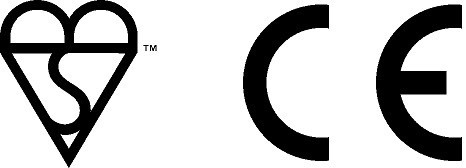
The standards code to look out for is BS EN 1078. This guarantees the helmet has met and passed the testing in construction, materials, field of vision, shock absorption and fastening laid out by the European Union’s General Product Safety Regulations (GPSR). For more information on helmet safety regulations, read our article on bicycle helmet safety standards.
While it might not look like it, a lot of technical innovation goes into constructing a helmet. For this reason, if you damage your helmet, you should replace it before your next ride as the structure may be compromised and fail to protect you.
For a solid all-purpose helmet, we recommend the Giro Foray Helmet. It allows you to fine-tune the fit and features numerous innovations to improve helmet safety. One example of this is MIPS, which permits slight movement of your head within the helmet. This disperses the force of an impact and further protects your skull in the event of a crash.
Gloves
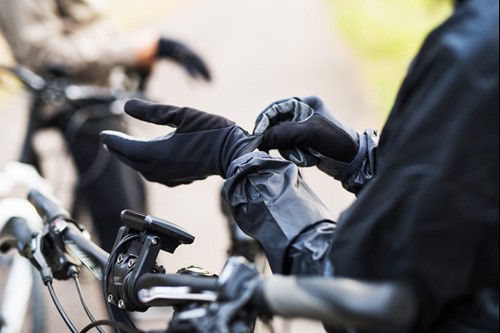
After a helmet, the next most common piece of bike safety gear a cyclist is likely own is a pair of gloves. These are a good idea for several reasons.
Firstly, if you fall off your bike, you’ll probably reach out to break your fall with your hands. In this instance, gloves protect the skin on your palms as you connect with the ground.
Some bike gloves are also padded, which further cushions the blow of a fall while also giving you a more comfortable grip of the handlebars. As an added bonus, they’ll keep your hands warm in winter, which means they’ll retain responsiveness for emergency braking.
Bike gloves broadly come in two forms: fingerless or with full coverage. Fingerless gloves afford some dexterity and ventilation while still protecting your palms, but offer less insulation in the colder seasons.
Some bike gloves may be made with thicker and tougher materials or come with armour plates, depending on the type of riding you intend to do. For casual road or trail riding, we recommend GripGrab Progel Short Cycling Gloves.
Reflectors and Lights
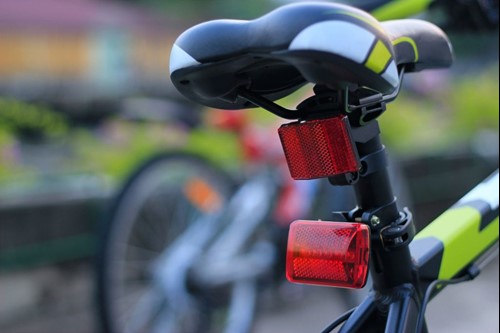
One of the most common causes of cycling accidents is a motorist failing to see a cyclist while turning or changing lanes. For this reason, reflectors and lights that make you as visible as possible are paramount.
There are plenty of options out there – from reflectors for nearly every component there is on a bike to high-vis wearables of all kinds. Let’s not forget actual powered lights either. Whichever option you pick, you should never be without some form of light-reflective material on each side of your body and your bike when you go for a ride.
For night riding, we recommend handlebar and seat reflectors, which typically come as standard with most bikes. A jacket like the REFLECT360 from Proviz is also a good idea. It’s made entirely of reflective material, making you impossible to miss once a light is shined on you.
Of course, visibility is a two-way street – you want to be able to see as well as be seen. For this reason, you should ride at night with nothing less than the aforementioned reflectors and a headlight and rear light.
Some other things to bear in mind when shopping for a bike headlight are to make sure the battery life lasts longer than your intended ride, that it’s weatherproof and that it’s just the right brightness for your intended use. As a guide, Evans Cycles recommend rear road lights of 50-100 lumens, front road lights ranging from 200-500 lumens, and front off-road lights of 500-1500 lumens.
Check out our article on how to cycle safely in the dark for more information on night riding.
Protective Glasses
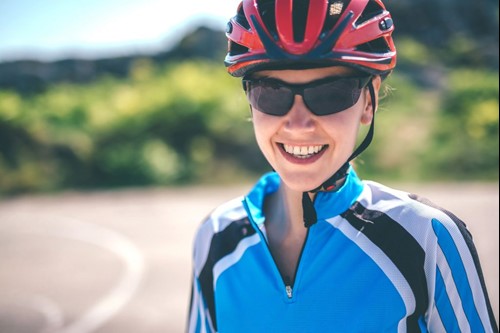
If you’ve ever ridden down a country lane, you’ll know better than most how often insects love to fly right into your mouth or eyes as you zip by.
Similarly, dust, stones and debris tend to kick up when riding on gravel toe-paths or main roads. That’s why you’ll often see cyclists riding in wrap-around sunglasses.
Any stray bug or piece of dirt is enough to impede your vision, cause discomfort and distract you, which is obviously dangerous and could cause a crash. So, we recommend wearing cycling glasses.
Another safety benefit of cycling glasses is that they prevent dazzling from the sun or car high-beams if you choose ones with tinted and polarised lenses. What’s more, they’ll shield your eyes from wind and rain so you can retain visibility in bad weather.
We recommend the FEW Rayet Anti-Fog Hydrophobic Multi Lens Glasses for this purpose. They’re affordable and about as versatile as cycling glasses can possibly be. They provide full coverage of your eyes and come with three interchangeable lenses for different lighting conditions, plus rain and fog resistant lens coatings. Basically, they have everything covered.
For more insights on how to stay safe while road cycling, see our road safety tips article.
Mirrors
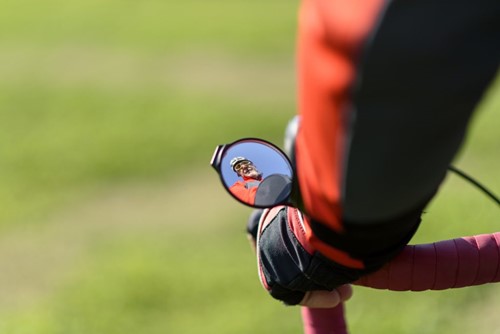
Though you don’t tend to see mirrors very often on push bikes, they do exist – and they’re actually quite a useful piece of bike safety gear.
Most road cycling hazards involve motorists, so if you’re riding home at rush hour it helps to see the traffic approaching from behind you. Cycling mirrors provide this benefit.
Mirrors come in various forms – some clip to your helmet or are worn as eyewear, others attach to your handlebars and a few even clip to the back of your gloves or wrist. Each of them offers different benefits.
A helmet or eyewear mirror will move with your head, allowing you to see the full 180-degrees behind you, as opposed to a handlebar mirror which will only give you visibility directly behind your bike.
Handlebar mirrors tend to have a larger reflective surface compared to helmet, eyewear or glove mirrors. They’re also less distracting and tend to be more durable.
Ultimately, you’ll want to weigh up what you prefer and what’s most practical for the type of riding you intend to do, but we recommend the Myklops Rear View Mirror as a good all-rounder. It’s roughly the size of a sports-watch and similarly worn on your wrist to give you full mobility and counteract any blind spots. Additionally, the mirror discreetly folds in and out to protect its surface when it’s not in use, which also prevents it from being too bulky.
Bike Kit
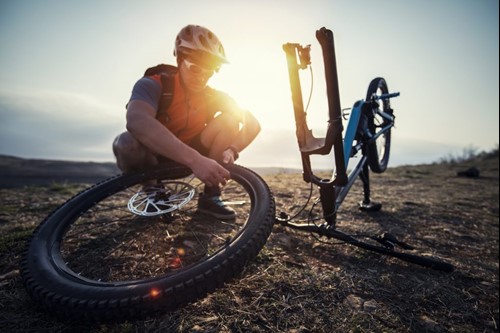
While your bike kit won’t actively protect you from hazards in the same way a helmet or glasses will, it’s a good idea to bring certain items with you on a ride. They’ll fix any issues that could arise that would impact your safety, thus potentially stopping an accident before it occurs. On every ride, we advise bringing along:
- A set of Allen keys to tighten your handlebars or adjust your seat height. A crash could knock them out of alignment or you might notice half-way through a ride that they’re a little off, so it’s better to be able to fix the issue on the spot than to ride on a potentially dangerous bike or have to turn back.
- A small bike-pump to top up your tyres if they lose pressure or you get a flat.
- A puncture repair kit so you can patch up a flat tyre.
- Your (fully charged) mobile phone so you can easily contact emergency services and family or figure out where you are if you get lost.
- Something to eat and drink so you stay hydrated and have enough energy to ride.
- A set of front and rear bike lights in case plans change and you have to ride home in the dark.
- A first aid kit to sterilise any cuts or grazes.
Of course, one essential piece of safety gear we haven’t mentioned is specialist cycling insurance. This will protect you against damage, personal accident and theft, helping you get back on your bike if something goes wrong. Get an instant online quote today and see what we can do for you.
